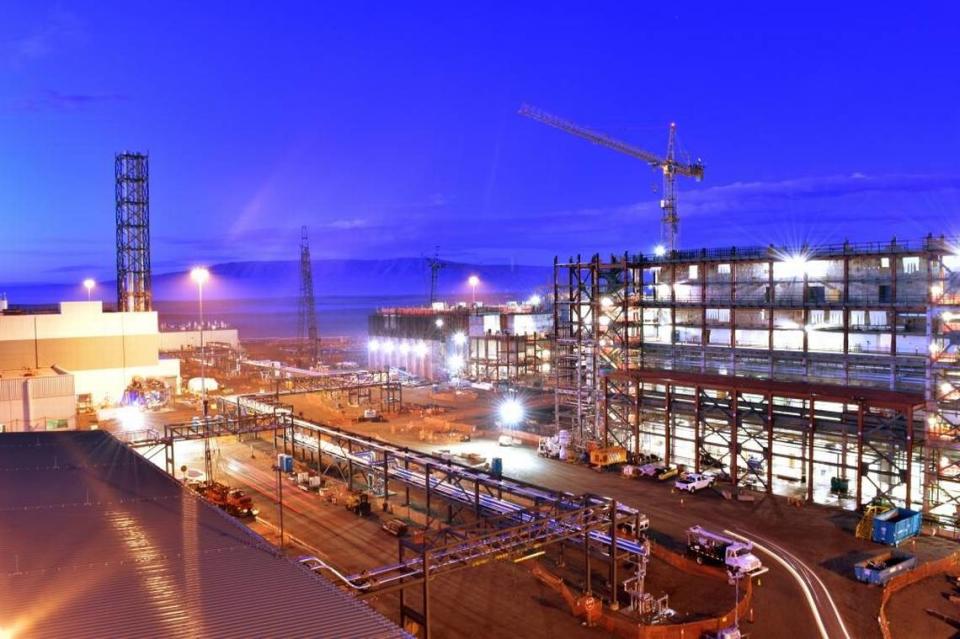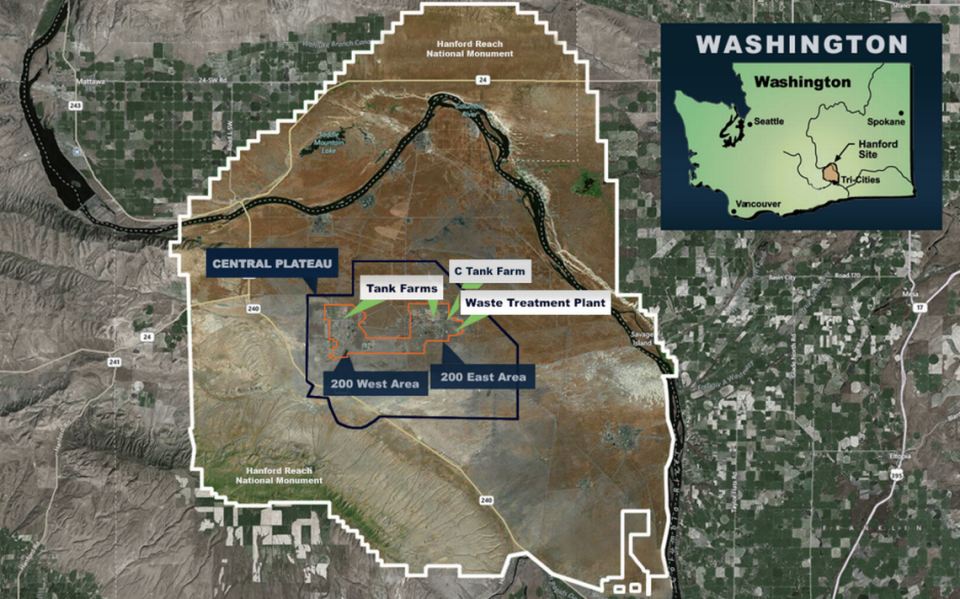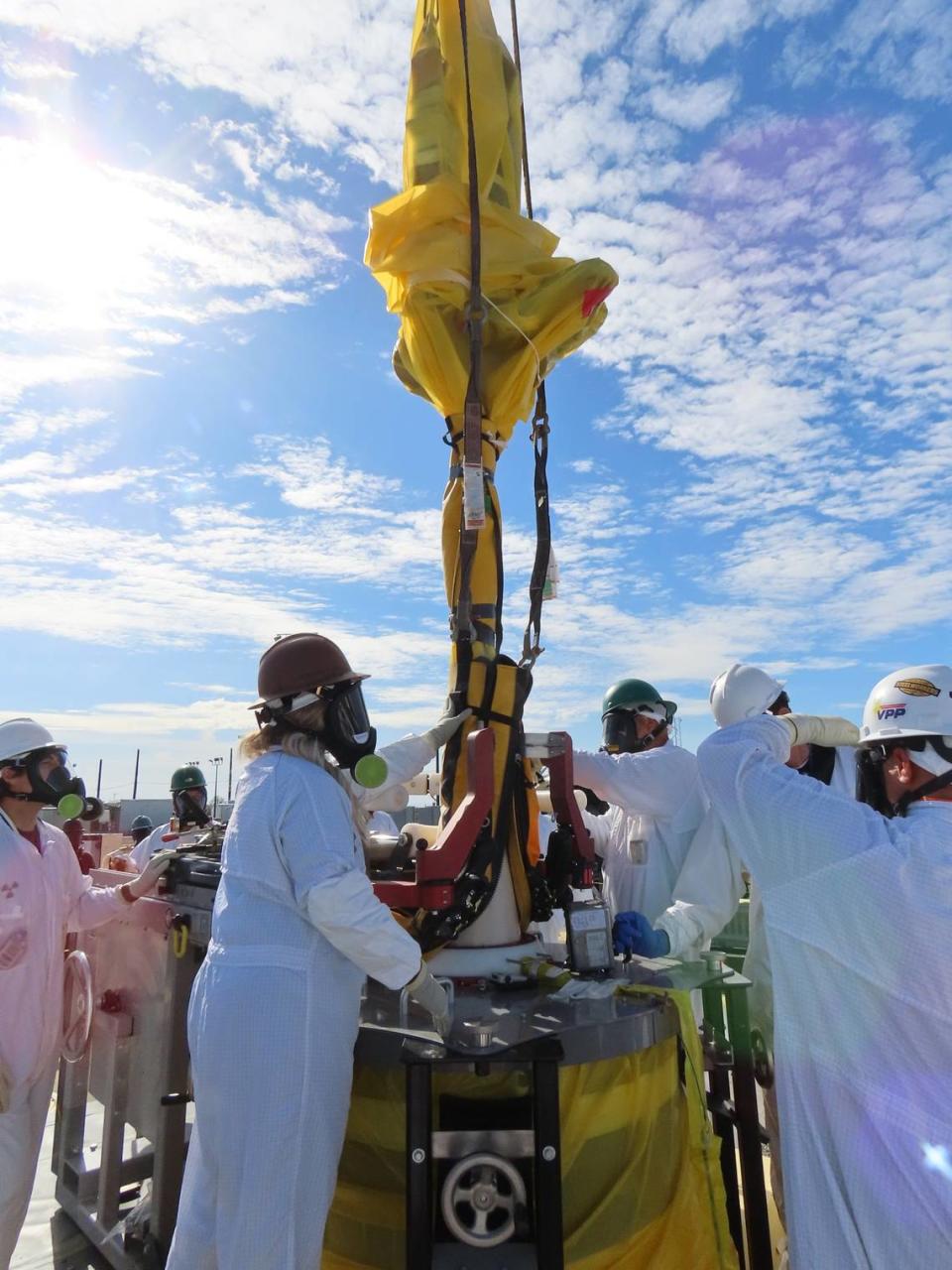Feds get more time to start up massive Hanford plant. Construction began 20 years ago
A federal judge has agreed to give the Department of Energy more time to start treating waste at the $17 billion Hanford vitrification plant under construction since 2002.
A federal court consent decree, as amended in 2016, had required the plant to start treatment of some of the least radioactive waste held in underground storage tanks at the Hanford site by the end of 2023.
But because of delays due to the COVID-19 pandemic that deadline has been extended to August 2025 under a court order filed Friday.
During the pandemic work slowed as employees on site were limited, work crews that were infected or exposed to the virus had to quarantine, and Hanford faced the same supply chain issues as the rest of the nation.
The extension in starting to treat waste granted Friday is the latest in multiple deadline extensions for a plant that, when construction began, was expected to start treating waste in 2007. It has faced setbacks ranging from technical issues to escalating cost estimates.
The Washington state Department of Ecology, a Hanford regulator, acknowledges that DOE is entitled to the latest deadline extension under provisions in the federal court consent decree that allowed extensions for “force majeure,” or extraordinary events beyond DOE’s power to control.
The Department of Ecology did not oppose DOE’s latest request to the court to extend the vitrification plant waste treatment deadline, plus two related vit plant deadlines and two deadlines for emptying leak prone underground tanks of radioactive waste.
But that doesn’t mean the Department of Ecology is happy about it.

“DFLAW can and should stick to its existing consent decree milestones,” said Ecology spokesman Ryan Miller on Friday.
DFLAW stands for Direct Feed Low Activity Waste, which is DOE’s plan to start treating low activity radioactive waste first at the vitrification plant and later start treating high level radioactive waste.
“The federal government has a legal and moral obligation to clean up Hanford in a timely manner,” Miller said. “Changing the DFLAW milestone now removes the incentive to meet the current 2023 date.”
Ecology would prefer that DOE had waited to ask the court for an extension when the deadline might be at risk, he said.
DOE ‘working diligently’ at Hanford
DOE continues to work toward meeting the 2023 deadline to start treating low activity waste.
“The Department of Energy is working diligently to achieve remaining milestones for tank waste retrieval and treatment in a safe and timely manner,” DOE said in a statement Friday, and pointed out that early this year it began pretreating waste to prepare it for glassification at the vitrification plant.
“This amendment simply allows for the DOE and state of Washington agreed-upon extension of milestone dates in the consent decree due to impacts of the COVID-19 pandemic,” it said.

DOE and the state agreed in late 2020, as the pandemic continued, on a framework for tank waste and vitrification plant deadline extensions due to COVID.
The Hanford nuclear reservation site adjoining Richland in Eastern Washington was used from World War II through the Cold War to produce nearly two-thirds of the plutonium for the nation’s nuclear weapons program.
Now about $2.5 billion annually is spent on environmental cleanup of the 580-square-mile site, including emptying underground tanks of 56 million gallons of radioactive waste and preparing to treat the waste for disposal.
5 Hanford deadlines extended
The changes approved Friday extend five deadlines for about 1 year and seven months.
Three are related to the vitrification plant.
In addition to giving the plant until August 2025 to start treating low level radioactive waste, two deadlines set to get it to that point also were extended.
The deadline for construction of the vitrification plant’s Low Activity Waste Facility, which will turn some of the least radioactive tank waste into a stable glass form for disposal at a Hanford lined landfill, is extended to Aug. 2, 2022.

And cold commissioning of that facility — trial runs of plant operations using a nonradioactive waste simulant — must now be started by Aug. 1, 2024.
The deadline extensions do not alter requirements for starting to treat high level radioactive waste by 2033 or having the plant fully operating in 2036.
Two tank waste deadlines also were extended Friday.
DOE now must have the waste from nine leak-prone, single-shell tanks in the groups called A and AX tank farms emptied as much as possible by May 1, 2028, an extension from Sept. 30, 2026.
The waste will be transferred to double shell tanks until it can be treated for disposal.
The other extended deadline is intended to keep work on pace to meet the new 2028 tank waste retrieval deadline by calling for at least two of those nine tanks to be emptied by the end of January 2023.
COVID slows Hanford work
DOE and the state of Washington had earlier agreed that the COVID-19 pandemic qualified as an extraordinary event beyond DOE’s control, which would justify extending deadlines.
They agreed that pandemic extensions would be based on one extra day from March 23, 2020, to Aug. 30, 2020, and three-quarters of a day for each day from Aug. 31, 2020, to March 13, 2022.

On March 23, 2020, DOE restricted the number of workers on site to about 10% of the total workforce of approximately 11,000. The 10% were essential for maintaining safe and secure conditions, and many other employees worked from home.
DOE began to bring workers whose jobs could only be done on site back to the nuclear reservation at the end of August that year and this spring resumed all field work on site.
The original consent decree deadlines were set in Eastern Washington District U.S. Court by Judge Rosanna Malouf Peterson in 2010, who also signed the order for new consent decree deadlines on Friday.
The state of Washington filed a lawsuit in federal court in 2008 when it became apparent that DOE would not have the vitrification plant operating by the then-deadline of 2011.
That resulted in a new deadline to have the plant operating in 2019.
When it became apparent that DOE would not meet that deadline, the federal court set a new consent decree deadline in March 2016 requiring low activity waste treatment to start by the end of 2023 — one of the deadlines now extended due to COVID-19.
Additional environmental cleanup at Hanford is required to be completed by deadlines set in the legally binding Tri-Party Agreement.
DOE has not asked for extensions to deadlines under the agreement, but is assessing whether they may be necessary due to COVID-19.

